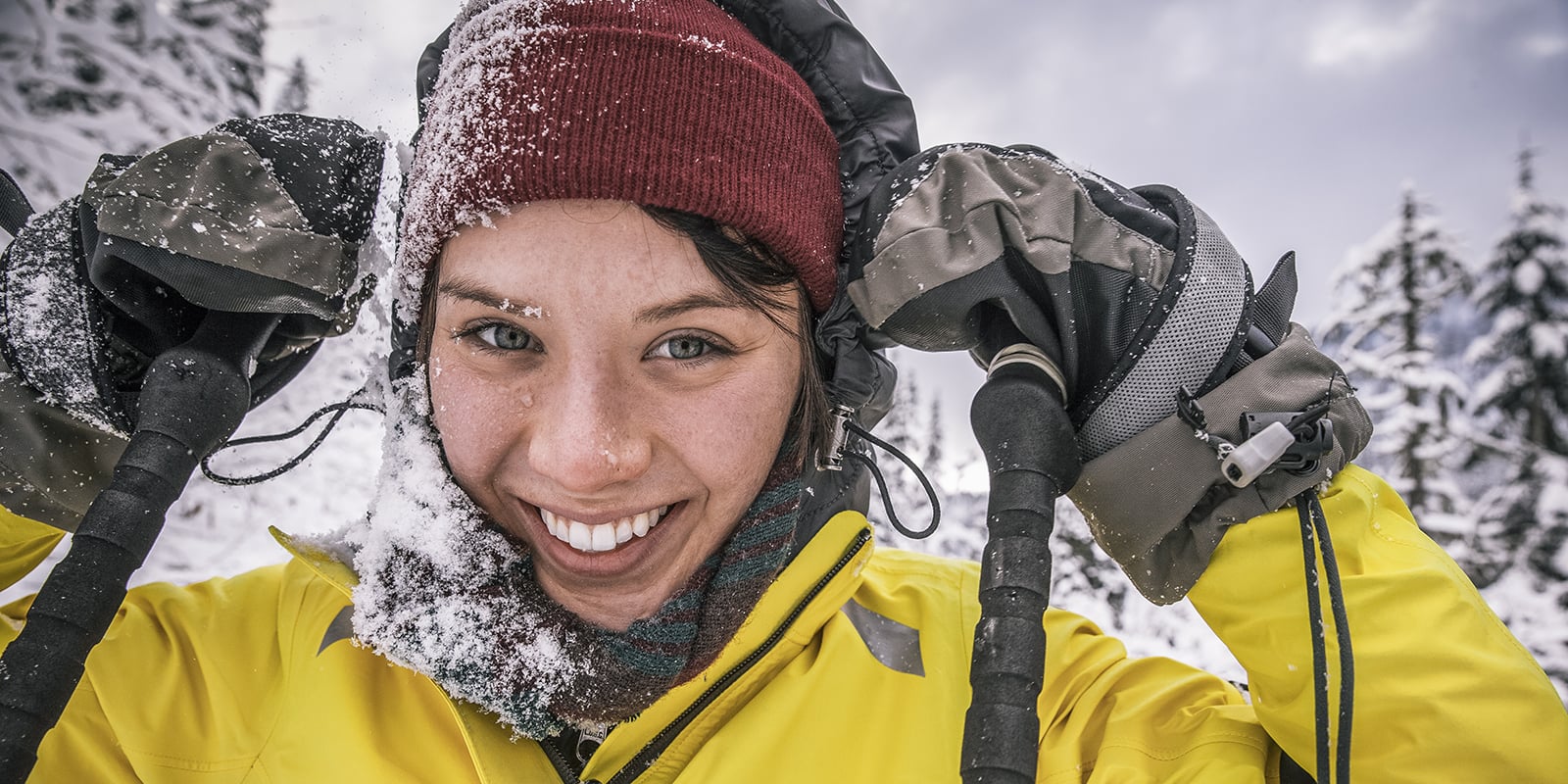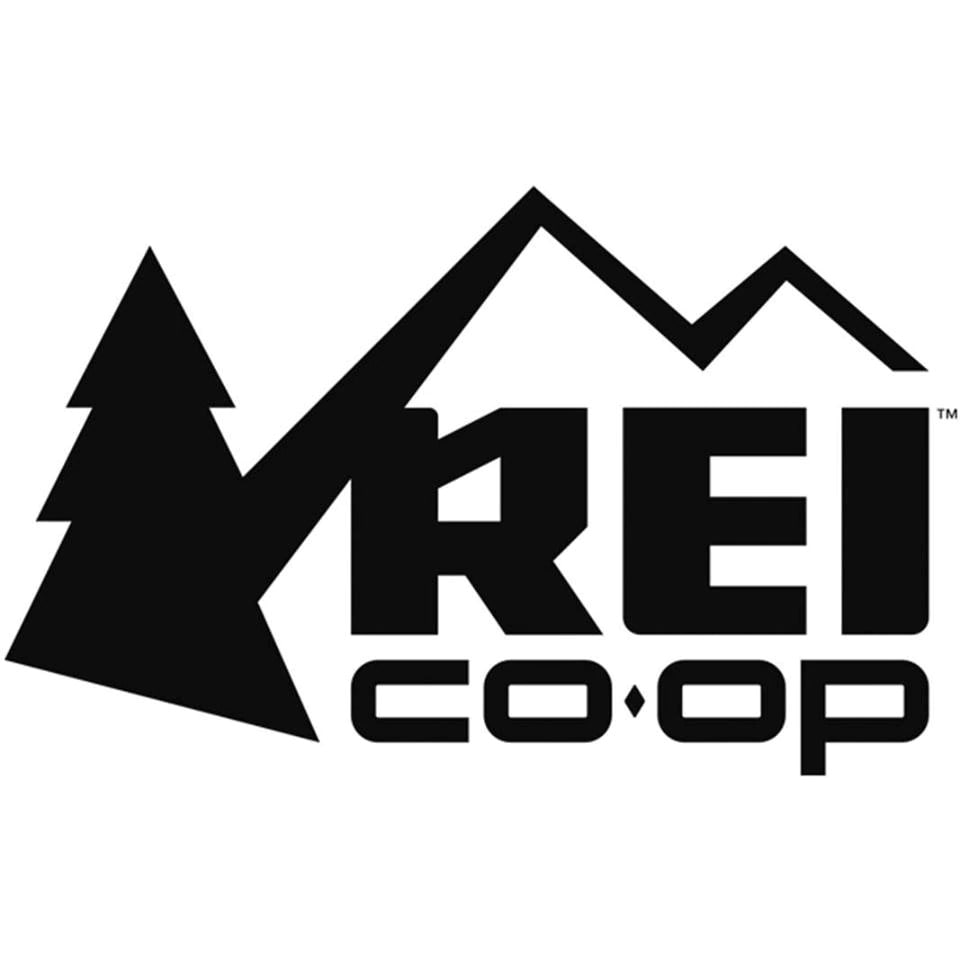Choosing the right pair of gloves or mittens for snowsports like skiing, snowboarding or snowshoeing can be the difference between a fun-filled, comfortable outing and a miserable trip with frigid fingers.
When shopping for gloves and mittens, first consider your activity. Most downhill ski and snowboard gloves and mittens are made with synthetic exteriors, often nylon, combined with a waterproof, breathable barrier and some type of insulation to keep your hands warm in cold, wet conditions. Abrasion-resistant patches on the fingers, knuckles and palms improve durability for activities like skiing and snowboarding.
In contrast, cross-country skiing is a highly aerobic activity where you're likely to work up a sweat. Cross-country ski gloves are flexible, breathable and allow moisture from sweat to escape more easily.
Once you know how you will be using your gloves or mittens, consider such features as insulation, waterproofness, dexterity and touch-screen compatibility.
Shop All Snow Gloves & Mittens
Video
Gloves Versus Mittens
Gloves, with their individual fingers, offer better dexterity than mittens and are ideal for activities where you need to frequently handle gear, adjust boot buckles and zip zippers. Lightweight gloves are a great choice for aerobic activities, such as cross-country skiing, where your body is generating lots of heat.
Mittens are warmer than gloves (made with the same materials) because, unlike with gloves, your fingers can share warmth. Mittens also have less total surface area for body heat to escape. They aren't as dexterous as gloves but they can still serve you well when you're holding ski poles, carving down the mountain on a snowboard or heading out for a hike in frigid temperatures.
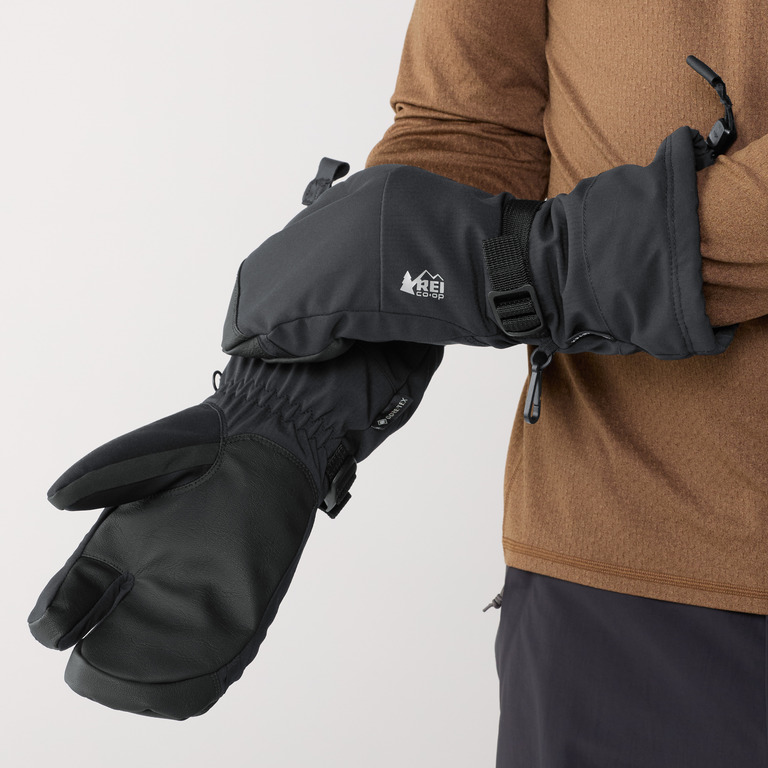
Split-finger mittens: Some manufacturers make a blend of a glove and mitten by joining, for example, your index and middle fingers together and your ring and pinky fingers together or some other variation. Sometimes called "lobster claw" or "lobster style," these are great solutions if you've found gloves aren't warm enough and mittens feel too clumsy.
3-in-1: Many manufacturers offer 3-in-1 gloves and mittens, which consist of a shell glove or mitten and a removable liner glove or mitten. These 3-in-1 systems are versatile, allowing you to combine the shell and liner for maximum warmth, or wear either one individually in warmer weather. Liner gloves offer excellent dexterity for handling gear without exposing your skin to the cold. You can purchase a 3-in-1 glove or mitten system as a unit or assemble your own by buying separate shells and liners.
Insulation in Gloves and Mittens
Two basic insulation types are commonly used in gloves and mittens: down and synthetic.
Down is an exceptional insulator and is prized for being light, easy to compress, long lasting and breathable. Down is more expensive than synthetic, but it maintains its loft longer than synthetic, making it a good value over time. Because down loses its ability to insulate well when it gets wet, it is not used in gloves and mittens as frequently as synthetic insulation. When it is used, it's typically protected by a waterproof shell that helps keep it dry. Down gloves and mittens are an excellent choice for skiing and snowboarding in cold, dry climates.
Synthetic insulation is less expensive than down, it insulates when wet and dries a lot faster. It is a good choice for use while skiing, snowboarding and playing in the snow, especially in damp climates. The downsides of synthetic insulation are that it offers a little less warmth for its weight, it's a bit bulkier than down and its insulating power gets reduced each time it is compressed. Most downhill ski, cross-country ski and snowboard gloves use synthetic insulation.
Waterproofness in Gloves and Mittens
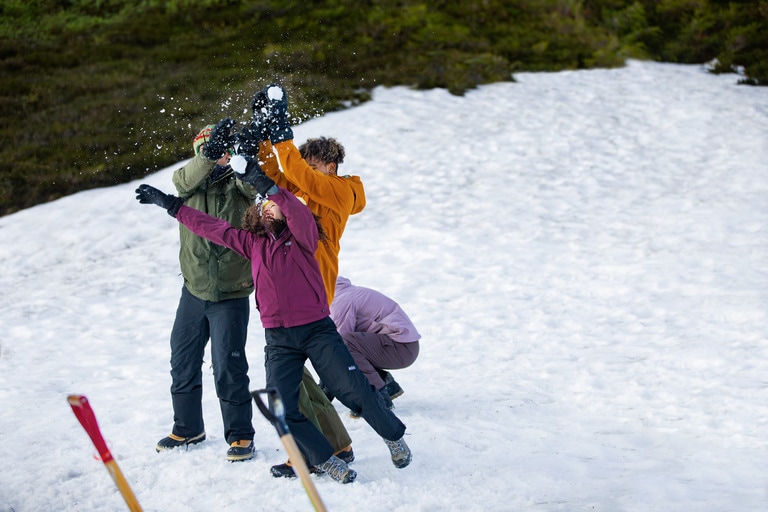
Most gloves and mittens designed for downhill skiing and snowboarding include a waterproof, breathable barrier to prevent moisture from snow and rain from getting in while allowing water vapor from sweat to escape. The barrier can be in the form of a membrane that is laminated to the fabric, an insert that is placed between the outer shell and the insulation or a coating that is applied to the fabric.
GORE-TEX® technology is frequently used in ski and snowboard gloves and mittens because of the high level of waterproof, breathable protection it offers, however many glove makers offer their own proprietary technology, such as The North Face HyVent®, that are also very effective and often less expensive. Waterproof gloves are also 100% windproof.
Tip: Even the most expensive waterproof gloves and mittens can get wet, usually from the inside out. Take care to keep snow from getting inside your gloves or mittens, and also try to limit sweating with them on. If your hands are dry, they'll be more likely to stay warm.
Heated Gloves and Mittens
Featuring battery-powered heating systems, heated gloves and mittens boost warmth on the coldest winter days. They typically include rechargeable lithium-ion batteries and can operate on different levels of heat output. The batteries and heating technology make the gloves more expensive, heavier and slightly bulkier than non-heated gloves, but those tradeoffs can be worth it if other gloves don't work for you. Expect to spend a premium on heated gloves and mittens.
Gloves and Mittens with Touch-Screen Compatibility
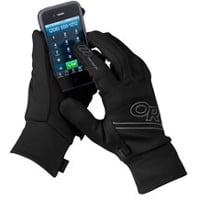
Today, many manufacturers are making gloves and mittens with touch-screen-compatible fingers and palms, allowing you to operate your smartphone or tablet without exposing your skin to the cold. Touch-screen compatibility is typically found in lightweight to mid-weight gloves that offer enough dexterity to control your smartphone. If you plan to use your phone frequently while outside, look for gloves with full finger and palm compatibility.
Gloves and Mittens: Size and Fit
A proper fit is key to your hands staying warm and comfortable, and for maintaining your dexterity. Gloves and mittens that are too big won't keep your hands warm and can make it difficult to hold ski poles, operate zippers and do other tasks. When they're too small, they will restrict movement and likely leave skin exposed at your wrists.
A properly fitting glove or mitten will have about ¼ inch of material at the end of your outstretched fingers. When you make a fist, the fit should not be too tight or restrictive. Consult the manufacturer's sizing chart for hand measurements if you can't try on the glove or mitten.
Additional Features of Gloves and Mittens
Leather palms provide excellent grip and stand up to abrasion better than synthetic palms.
Long gauntlet cuffs extend over the sleeves of your jacket and cinch closed to keep snow and cold air from getting in.
Wrist cinches snug the gloves or mittens at the wrists for a comfortable, secure fit on your hands.
Removable liners are designed to be pulled out to dry more quickly; some liners can be used alone for days when you don't need the added warmth of an outer glove shell.
Zippered pockets, often on the back of the hand, are sized to fit disposable hand warmer packets and can double as vents on warmer days.
Thumb wipes: Many gloves designed for winter feature soft material on the thumbs specifically for wiping your nose when it begins to drip.
Glove leashes, or wrist cords, secure your gloves or mittens to your wrists so you won't drop one from the chairlift on your way up the mountain.
Editors' Note: This article has been updated with new information and links since it first published in Oct. 2017.
